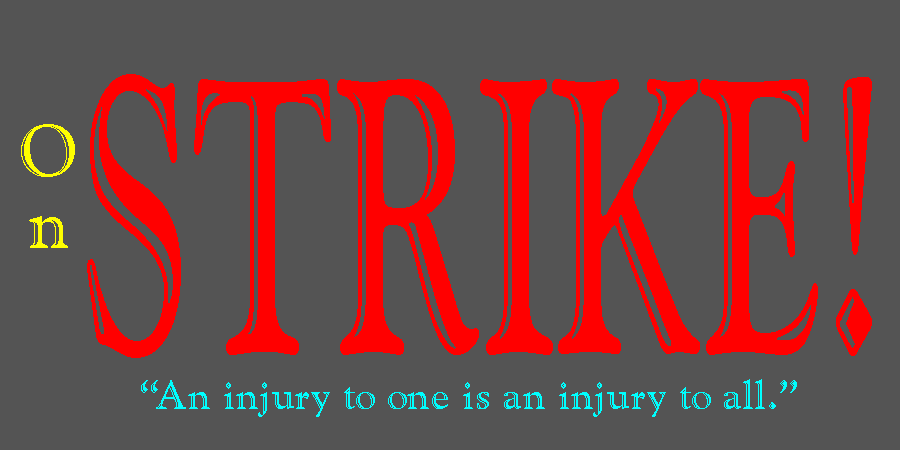Plenty of people are raising the idea that TSA workers can stop the US government shutdown with a strike. A TSA Strike, so the thought goes, is something that would bring travel to a halt. Travelers would hate it. Companies would hate it. And since most Americans blame Trump for the shutdown, he’d have to fold and reopen the government without getting funding for a wall.
Sounds good. The trouble is that a traditional TSA Strike is illegal. So how would it work?
Let’s look at some options.
Option 1: TSA Strike as Wildcat Strike
The first option is to just ignore the law and strike anyway. Barbara Ehrenreich advocates this, among others. Union leadership almost certainly won’t endorse a strike action. But workers can strike anyway if they really want to do it. They’d do it as a wildcat strike.
Many historical wildcat strikes, such as the Pullman Strike, occurred in part because the company failed to recognize the workers’ union.
More recent wildcat strikes, at least in the United States, have happened because anti-union legislation since the 1970s has weakened the official authority of public sector unions to strike. In the last year or so, we’ve seen a wave of teachers’ wildcat strikes to protest extremely low pay and lousy benefits and working conditions. Strike locations include West Virginia, Oklahoma, Arizona, and North Carolina.
These strikes were generally successful.
The major risk here is that Trump might move to fire TSA workers and decertify their union if there’s a TSA Strike. The historical precedent for this is what Ronald Reagan did to the air traffic controllers, and Professional Air Traffic Controllers Organization, in 1981. Mainstream media coverage, in particular, stresses the analogy between TSA workers and air traffic controllers.
There are good reasons for thinking people are overstating the risk. For one, there are more TSA screeners in 2019 than air traffic controllers in 1981. And they’re arguably more difficult to replace. Two, there’s more urgency now to replace workers quickly than there was in 1981, due to security and the aftermath of 9/11. Three, Trump is likely far less prepared than Reagan was.
Option 2: TSA Strike as Sickout
The second option is to have everyone call in sick. Or, if not everyone, then at least a lot of people. Enough to cause significant travel delays. This option now has significant support among liberals and progressives.
The sickout is a common tactic among public sector workers, particularly teachers. Oakland teachers, for example, held a sickout just a few days ago. Compared to a wildcat strike, it’s relatively easy to organize. And it’s not as controversial among fellow workers.
There’s some evidence, moreover, that there’s already a TSA sickout happening, as 10% of workers are calling in sick now. But it’s not yet enough to cause noticeable delays.
As far as a TSA strike goes, this option is less confrontational. It’s also probably not illegal, and so it’s less likely to result in mass firings. But it’s also less likely to work, at least in the short term. It’s possible that workers would need to sustain a sickout for at least several days before travelers really started to notice.
Option 3: TSA Strike as Sabotage
The third option is to engage in sabotage. By ‘sabotage’, I mean deliberate slowdowns that cause significant travel delays, but don’t actually require anyone to miss work. I’m not talking here about breaking shit or causing damage. Rather, I’m talking about the organized withdrawal of efficiency, as the Industrial Workers of the World advocates.
One way to conduct a TSA strike is thus to have people show up to work, but to work slowly and inefficiently.
How might that work?
The TSA has a lot of rules. A lot of rules. The idea is for screeners to enforce all of them. By the book, and in the least efficient way possible.
As with Option 2, this is probably legal. And so also unlikely to result in mass firings. It’s also maximally frustrating to travelers, as they’d be able to go to the airport only to miss their flights.
Mix and Match?

Source: https://en.wikipedia.org/wiki/File:User-Strike.gif
These options aren’t mutually exclusive. TSA workers could certainly combine 2 and 3. What if half the staff called in sick and the other half worked as slowly as possible? A mix and match is feasible.
Who says strikes can’t be fun?